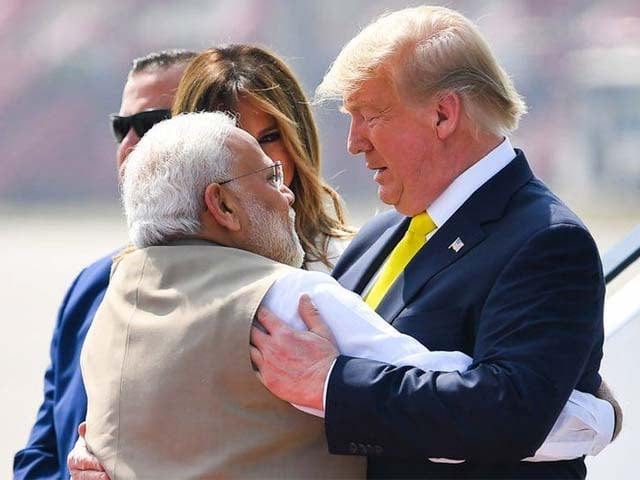India surprised many of its critics by successfully carrying out the synchronised disengagement of its forces along the northern Line of Actual Control (LAC) with China as well as agreeing to a de facto ceasefire along its western LAC with Pakistan. These developments prove that India’s regional strategy is adapting to the post-Trump reality. The South Asian state will still remain among America’s top strategic partners anywhere in the world, but the Biden Administration doesn’t seem as interested in instrumentalising this relationship as part of its declared “Great Power competition” as the previous one was. After all, President Biden’s team is currently reviewing every aspect of their country’s approach to China with a newly established task force as well as recently signalling its interest in continuing peace talks with the Taliban after just announcing that it’ll dispatch Special Representative Khalilzad to the region for that purpose. In addition, it repeated the Trump Administration’s threats to sanction India if it goes through with its planned purchase of Russia’s S-400s.
In this changing environment, India no longer plays the same role for American strategy as before. For the time being at least, the US doesn’t intend to as actively support India’s intended conventional military containment of China as the Trump Administration did since that doesn’t align with Washington’s willingness to bring relations with Beijing out of their present nadir. In turn, New Delhi knew that it had to cut a deal with its neighbours since it can’t rely on Washington to support it if the country’s strategy of regional aggression provokes another security crisis like it did last summer with China or in February 2018 with Pakistan. Even then, however, the tough-talking Trump Administration was uncharacteristically pragmatic and didn’t give full backing to India. Considering how comparatively “softer” in approach the Biden Administration has signalled that it’ll be, New Delhi knows that it definitely wouldn’t be able to rely on Washington if tensions with Beijing and/or Islamabad suddenly worsened due to its destabilising designs against them.
This observation doesn’t mean that India has disowned its prior policies, but just that it’s moderating them for the time being while it bides its time and struggles to find its place in the US’ new regional strategy. The Biden Administration has also made a big deal about its rhetorical commitment to democracy and human rights, two issues that India has come under increased criticism for in recent years but which were largely ignored by the former Trump Administration for the earlier described realpolitik reasons of its Great Power competition with China. The Biden Administration, however, might not remain silent about them unless it gets something in return just like Trump did since these issues are very important for the Democrats. They might even have planned to instrumentalise them in the coming future to compel India into moderating its strategy of regional aggression had New Delhi not already done so to a discernible degree with its recent positive steps towards stabilising the northern and western LACs. Since they got something in return, they might stay silent for now.
Seeing as how India is being pressured into taking these steps by America’s changing regional strategic calculations that are beyond New Delhi’s control, it can be presumed that its decision makers might even be somewhat resentful of Washington since they hadn’t expected to be forced into making these moves which go against everything that Prime Minister Modi had previously said in public that he stands for, particularly taking a so-called “hard line” towards China and Pakistan without ever compromising with them. This understanding, if accurate, means that India might just be biding its time and waiting for what it might mistakenly regard as the perfect opportunity to reassert its policy of regional aggression. In other words, it’s only going along with the geostrategic flow for now but isn’t sincerely interested in sustainably ensuring stability along either LAC. At the same time, however, India knows that it can’t depend on its recently renewed relations with Russia to replace the military support from the US that it lost after Trump left the White House.
The Russian-Indian Strategic Partnership is one of the most important axes in all of Eurasia, but Moscow would never consider confronting Beijing in coordination with New Delhi like Washington under Trump would have in the worst-case scenario. Furthermore, some Indians have previously griped about Russia’s unreliability as an arms partner, which they claim forced them to seek out American wares instead in the first place. Although Russia is indeed seeking to “balance” China with India, it’s doing so in as “friendly” of a way as possible in order to avoid inadvertently provoking a security dilemma between them. I explained this at length in my recent piece about “Why Structural Realists Are Wrong To Predict That Russia Will Help The US Against China”. For these reasons, India feels that it has no choice but to reverse its rapid deterioration of relations with China and Pakistan, at least for the time being. The post-Trump reality is simply too disadvantageous for it to continue with its policy of regional aggression, but that might of course change once again in the future.



COMMENTS
Comments are moderated and generally will be posted if they are on-topic and not abusive.
For more information, please see our Comments FAQ